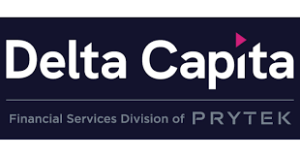At the Finance Innovation Webinar, “Open Innovation & Collaboration between businesses, software vendors and Fintechs”, held on June 30th, 2021, Laurence Arnold, Head of Innovation Management and Strategic Initiatives at AXA Investment Managers, answered to Daniel Ivanier.
Laurence’s speech was in French, you will find below the English translation.
“For an Asset Manager today, 3/4 of costs are operational costs. It’s huge. On post-trade, post-execution in financial markets, there are 3 important issues. The first is costs, the second is operational risks, and the last is timing: the elements Daniel mentioned.
Blockchain technology is partly an answer to these problems. AXA IM works across the entire value chain, with Fintechs but also our historical partners, to precisely find innovative solutions that reduce these risks and costs, and at the same time bring a lot of efficiency and fluidity.
We started our discussions with Fragmos Chain about 18 months ago. We met in an environment of innovation and open innovation. The company presents a very clear and promising value proposition. That’s why we were motivated to work together. What is impressive with Fragmos Chain is the energy deployed to form the ecosystem. In blockchain initiatives and in the world of asset management one is necessarily nested in a financial ecosystem and cannot operate alone. It is therefore necessary to discuss with players around us. This is what Fragmos Chain is very good at. We did a lot of bilateral workshops but also multilateral workshops with the Industry. This is where we can see each other’s priorities, differences, commonalities.
Fragmos Chain did a lot of work before the workshops. This allows us to be very focused, very precise during working sessions. Experts who need to work on this type of topic are very busy, their BAU is heavy, and they do not always have time to work on innovation. Fintechs must work independently; we need to talk only about issues that need to be addressed together. For instance when our teams were not available, we decided instead to submit data to Fragmos Chain to move forward.
These two worlds walk in parallel: big behemoths with slow decision-making bodies and processes, teams that have other things to do than innovating and thinking about 5-10 year targets; and Fintechs who are very reactive, very fast, very agile and who have to move very quickly also because their survival depends on it as well as their competitiveness. They must be patient with us, but I understand the interest of Fintechs in moving forward quickly.
Partnerships are really important because we don’t all have the same priorities. Daniel mentioned this particularly in the case of investment banks. Thus Fintechs that have been developed with the support of banks sometimes present us with solutions that are not suitable for us, and which entail additional costs. That is why it is necessary to be able to discuss and examine the specificities of each firm. This is what we do with Fragmos Chain and others to evolve the models. Generally it works well: discussions with Fintechs help resolve our blocking points.
We worked a lot on functional topics with Fragmos Chain. We are now moving into the integration phase. We cannot function without our Asset Servicer: our middle and back office has been outsourced, so it is critical that they adhere to this new model. The tasks involved are complex manual tasks that carry many operational risks: uncleared OTCs are very complex and involve significant operational risks. Having a platform that plugs in easily allows us to quickly respond to this specific issue. But it’s an ecosystem, so we need to be able to see who’s on the platform. And Simcorp, which is our main front-to-back tool, also needs to be adapted and connected.
We still have work ahead of us, but this dynamic of exchange of information, as with many other Fintechs, is fundamental.”






